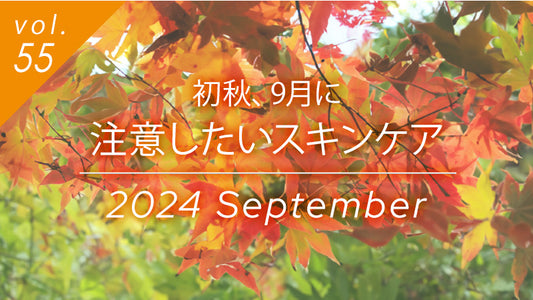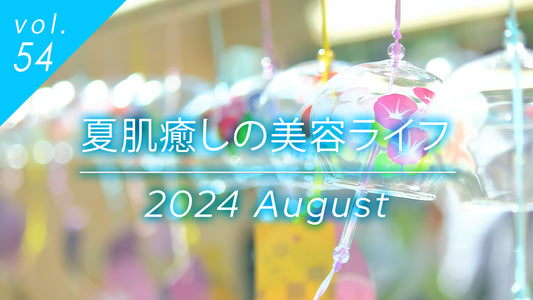
The end of the rainy season was delayed until August, and this summer we were hit by a heatwave after record-breaking rainfall. The heatwave will soon reach its peak, and we will gradually start to feel autumn in our days.
There are many words to describe autumn, such as autumn for sports, autumn for harvest, autumn for appetite, autumn for art, autumn for reading, etc., and as the temperature and humidity start to drop, it is a season in which it is easy to devote yourself to something. Well, we have been living with COVID-19 since March, but why not find something to devote yourself to this autumn as a change of pace?
This time, we will focus on skin care for this "special autumn" season, where we will soothe tired skin from the summer and continue to wear masks.
Autumn. Heal weakened skin and restore its ability to adapt to changes in the skin environment!
As the seasons change from summer to autumn, the skin environment also changes significantly.
Especially in September, your skin is still tired from the summer, and its ability to adapt to temperature changes and dryness is weakened. It is important to thoroughly soothe your skin's summer fatigue and restore its ability to adapt to changes in the skin environment.

What's happening to your skin when wearing a mask?
This year, wearing masks has become a part of the new lifestyle of "living with COVID-19" and has become commonplace across the nation. In particular, this is the first time anyone has had to wear a mask for such a long period of time, and we must first understand that the skin environment is very different between areas where a mask is on and areas where it is not.
1. UV rays
Ordinary masks (non-woven fabric, cotton, urethane) themselves are not treated with UV protection, but just wearing a mask provides some UV protection. In other words, the part of the face above the eyes that is not covered is directly exposed to UV rays, while the lower part of the face that is covered by the mask is protected from UV rays. In other words, there is a big difference in UV stress between the top and bottom of the face.
2. Pollution in the air
Dirt from the air adheres to the area above the eyes, but almost no dirt adheres to the area where the mask is worn. This dirt stress also differs greatly between the top and bottom of the face.
3. Temperature difference
Wearing a mask in the heat of summer is really tough.
The skin covered by the mask becomes hot due to body heat. The temperature difference between the top and bottom of the face causes stress that the skin has never experienced before.
4. Humidity difference
In addition to the temperature difference, the skin covered by the mask becomes steamy due to the moisture that evaporates from the skin. As with the temperature difference, the humidity difference between the top and bottom of the face also causes stress to the skin. The inside of the mask becomes steamy and makeup gets dirty.
Eye care is important as we continue to wear masks!
The area around the eyes is exposed to UV rays and atmospheric pollution, and there are also temperature and humidity differences with the areas covered by masks, so skin cells are unsure of which environment to adapt to. The skin around the eyes is particularly sensitive to these stresses and has low resistance, which causes aging to progress rapidly around the eyes. Include face masks and eye care in your basic skin care routine to first thoroughly soothe tired skin from summer. Also, be aware of the importance of eye care when wearing a mask, and be sure to incorporate eye care into your daily skin care routine.
We've brought you skin care tips for this "special autumn" when masks are still needed!
The next theme will be "Autumn is here, nourish your skin too!"



